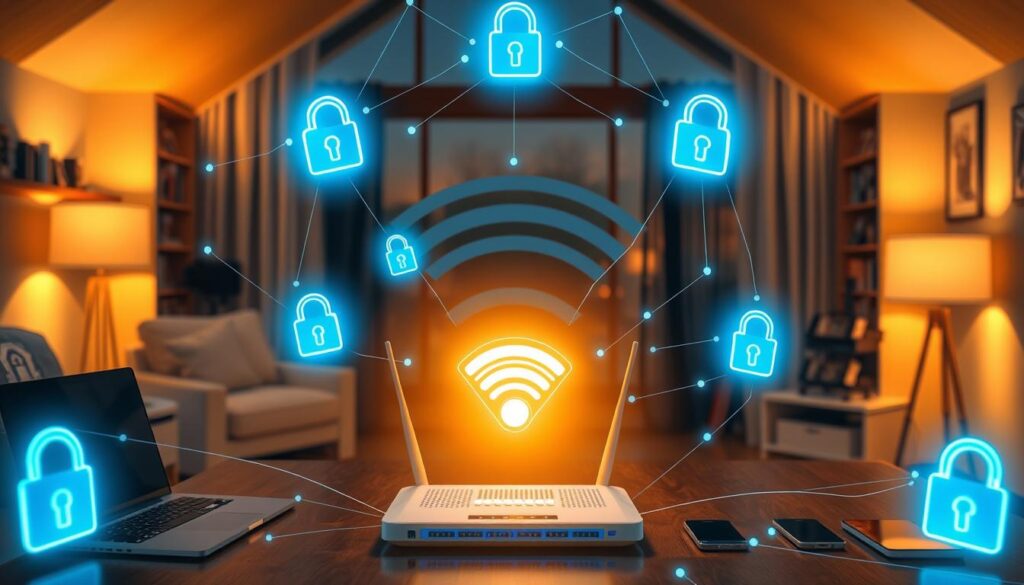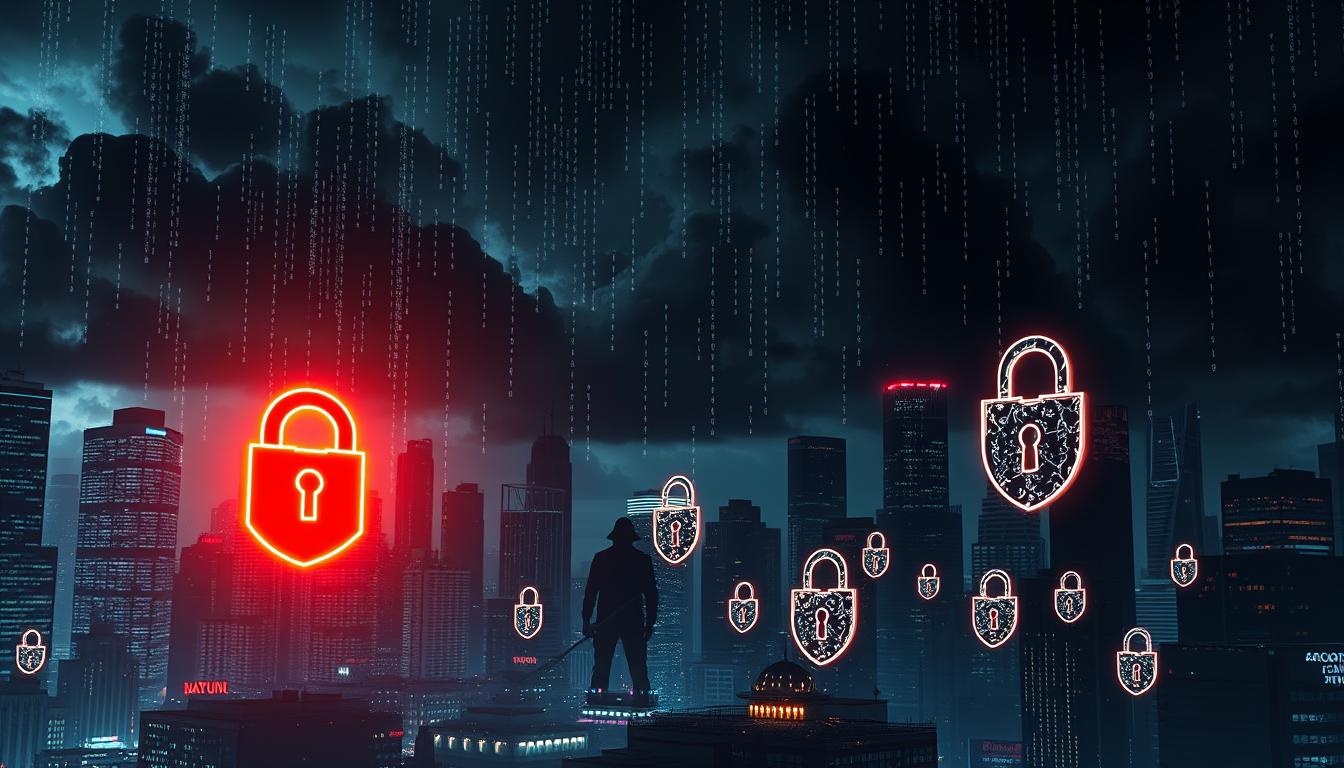In today’s digital age, our lives are increasingly intertwined with the internet. From online banking and social media to remote work and entertainment, the web has become an integral part of our daily routines. However, with this reliance on technology comes the need for heightened internet security awareness. As Canadians, we must be vigilant in protecting ourselves and our data from the growing threats that lurk in the online realm.
Internet security is a crucial concern for individuals and businesses alike. Cybercriminals are constantly developing new and sophisticated tactics to infiltrate our digital lives, whether through malware, phishing scams, or social engineering attacks. Staying informed about these threats and adopting essential security practices is the first step towards safeguarding our online activities and personal information.
Key Takeaways
- The internet has become an integral part of our daily lives, but it also presents numerous security risks.
- Canadians must be proactive in protecting themselves and their data from emerging cyber threats.
- Understanding the common internet security threats, such as malware and phishing, is crucial for staying safe online.
- Implementing essential security practices, like strong passwords and two-factor authentication, can significantly enhance one’s online safety.
- Securing home networks and adopting safe browsing and email habits are also important for maintaining internet security.
Understanding Internet Security Threats
In the digital age, internet users face a growing array of security threats that can compromise their online safety and privacy. These threats come in various forms, from malware like viruses, worms, and Trojans to deceptive phishing and social engineering attacks. Understanding these threats is crucial for developing effective strategies to protect oneself and stay safe online.
Malware: Viruses, Worms, and Trojans
Malware, or malicious software, is a broad term that encompasses a range of programs designed to infiltrate, damage, or gain unauthorized access to computer systems. Viruses, for instance, are self-replicating programs that can spread rapidly, infecting files and systems. Worms, on the other hand, can propagate through networks without the need for human intervention. Trojans, named after the famous Trojan horse, are programs that disguise themselves as legitimate software to gain access to a user’s device and steal sensitive information.
Phishing and Social Engineering Attacks
In addition to malware, internet users must also be wary of phishing and social engineering attacks. These tactics rely on manipulating people into revealing sensitive information or performing actions that compromise their security. Phishing scams, for example, may involve fraudulent emails or websites designed to trick users into entering their login credentials or financial information. Social engineering attacks, on the other hand, may involve impersonating authority figures or exploiting human vulnerabilities to gain access to protected systems or data.
By understanding the various internet security threats and how they operate, users can better protect themselves and their digital assets from the potential consequences of these attacks.
“Staying informed and vigilant is the first line of defense against the ever-evolving landscape of internet security threats.”
Protecting Your Online Identity
In today’s digital world, protecting your online identity is paramount. Your online identity, which includes your personal information, digital footprint, and online activities, is vulnerable to various threats. Safeguarding your data protection and privacy protection is essential to maintain control over your digital presence and prevent unauthorized access or misuse of your sensitive information.
One of the crucial steps in protecting your online identity is being mindful of the information you share online. Be cautious when posting personal details, such as your address, phone number, or financial information, on social media platforms or other online platforms. Regularly review your privacy settings and limit the visibility of your profiles to only trusted connections.
- Carefully curate the content you share online to maintain a positive digital presence.
- Monitor your online presence and set up alerts to detect any unauthorized use of your personal information.
- Use strong, unique passwords for all your online accounts and consider using a password manager for added security.
Additionally, be vigilant when it comes to phishing attempts and other social engineering tactics that aim to steal your personal data. Verify the legitimacy of any requests for sensitive information before providing it, and be wary of unsolicited emails or messages from unknown sources.
“Protecting your online identity is not just about safeguarding your personal information; it’s about maintaining control over your digital reputation and preserving your autonomy in the digital realm.”
By implementing these data protection and privacy protection practices, you can take proactive steps to secure your online identity and mitigate the risks associated with digital threats. Remember, your digital footprint is a reflection of who you are, so it’s crucial to maintain a well-protected and positive online presence.
Internet Security: Essential Practices
In today’s digital landscape, maintaining robust online security is paramount. Two critical practices that can significantly enhance your internet security are using strong passwords and enabling two-factor authentication (2FA).
Strong Passwords and Password Managers
Passwords are the first line of defence against unauthorized access to your online accounts. It’s essential to create unique, complex passwords for each of your accounts, as using the same password across multiple platforms can put your data at risk. Password managers are a convenient and secure solution, generating and storing strong, randomized passwords for you.
- Avoid using easily guessable information like birthdays, pet names, or common words in your passwords.
- Opt for a password manager that generates and stores your passwords securely, reducing the burden of remembering multiple complex passwords.
- Consider using a password that is at least 12 characters long, with a mix of uppercase and lowercase letters, numbers, and symbols.
Two-Factor Authentication (2FA)
Two-factor authentication adds an extra layer of security to your online accounts by requiring a second form of verification, such as a code sent to your mobile device, in addition to your password. This significantly reduces the risk of unauthorized access, even if your password is compromised.
- Enable 2FA on all your important online accounts, such as your email, banking, and social media platforms.
- Consider using an authentication app or security key as your second factor of authentication for added convenience and security.
- Regularly review and update your 2FA settings to ensure they remain effective in protecting your online security.
By implementing strong passwords and enabling two-factor authentication, you can significantly enhance your overall online security and safeguard your digital identity.
Securing Your Home Network
In the digital age, our homes have become hubs of connectivity, with a growing number of devices relying on a stable and secure home network. Protecting this network is crucial to safeguard your personal information, online activities, and the overall integrity of your digital ecosystem. Let’s explore the importance of router security and network encryption to ensure your home network remains a fortress against unauthorized access.
Router Security: The First Line of Defense
Your home router is the gateway to your network, and ensuring its security is paramount. Start by changing the default administrator username and password to a strong, unique combination. This simple step helps prevent unwanted access to your router’s settings. Additionally, make sure to keep your router’s firmware up-to-date, as these updates often address known security vulnerabilities.
- Change the default router username and password
- Regularly update your router’s firmware
- Disable remote administration access to your router
Embracing Network Encryption
Network encryption is the backbone of a secure home network. By enabling robust encryption protocols, such as WPA2 or WPA3, you can protect your wireless communications and prevent eavesdropping. This step ensures that your online activities, including sensitive information like passwords and financial transactions, remain shielded from prying eyes.
- Enable the latest encryption protocol (WPA2 or WPA3) on your router
- Avoid using outdated encryption methods like WEP
- Configure your network to use the strongest encryption settings
Securing your home network is a critical step in maintaining your overall home network security. By prioritizing router security and implementing robust network encryption, you can rest assured that your digital haven is protected from unauthorized access and potential cyber threats.

Safe Browsing and Email Habits
Maintaining safe browsing and email habits is crucial for your online security. Start by being cautious when clicking on links, especially in emails or social media messages. Phishing attempts often disguise themselves as legitimate communications, so it’s essential to verify the source before engaging. If an email or message seems suspicious, refrain from providing any sensitive information or clicking on embedded links.
When browsing the web, stick to trusted and reputable websites. Avoid visiting unfamiliar sites, as they may harbor malware or other security threats. Keep your web browser and operating system up-to-date to ensure you have the latest security patches and protections.
Email security is also paramount. Be vigilant when handling your email communications, and never share your login credentials or other personal information through email. Use strong, unique passwords for your email accounts and consider setting up two-factor authentication for an extra layer of security. By adopting these safe browsing and email habits, you can significantly enhance your overall online safety and protect yourself from various cyber threats.



